It’s easy to lose yourself in an Emma Stern painting. Her female subjects are impossibly glossy-skinned and perfectly proportioned, bathed in soft lavenders and blushing pinks, striking poses both alluring and threatening. They exude the confidence of women who have no idea what a patriarchy is, much less living their lives fighting one. Gazing into their glossy, pupil-less eyes, one can’t help but enjoy how delightfully bold they are.
Stern’s unique vision continues to draw fans both in and outside of the art world, and with her newest exhibition, Welcome to The Rabbit Hole, she is sure to attract even more. It launches Sept. 4 at the Half Gallery NYC and will be on display through Oct. 1. In a talk with Playboy, Stern discussed the themes she had in mind when creating the paintings for the new exhibition, the narrative that accompanies the new portraits, and more.
Playboy: When did you first know that you had an interest in art?
Stern: I unfortunately have a really boring answer to this, which is always. I don’t think there is anyone in my life who really ever thought I would do anything else. I was one of those kids, I truly was. My parents love to tell this story about how they picked me up from daycare. I was in pre-K and all the other kids were playing outside in the jungle gym. And I was sitting with a cup of water and a paintbrush painting on the asphalt. And as it would get absorbed, I would just do it again.
My earliest memory, my first time painting, I was really little, five years old. Our house was getting painted, there were construction guys painting the house. And I was sitting there for days, just watching them. Finally one of them turns around and says, “Do you want to try?” And so I thought I wanted to be a house painter. (laughs)
I never seriously thought I’d do anything else. There was a while where I applied to art school to do medical illustration. That’s what I thought I would do, because my dad used to be a scientist. But at the end of the day, I’m still just doing bodies.
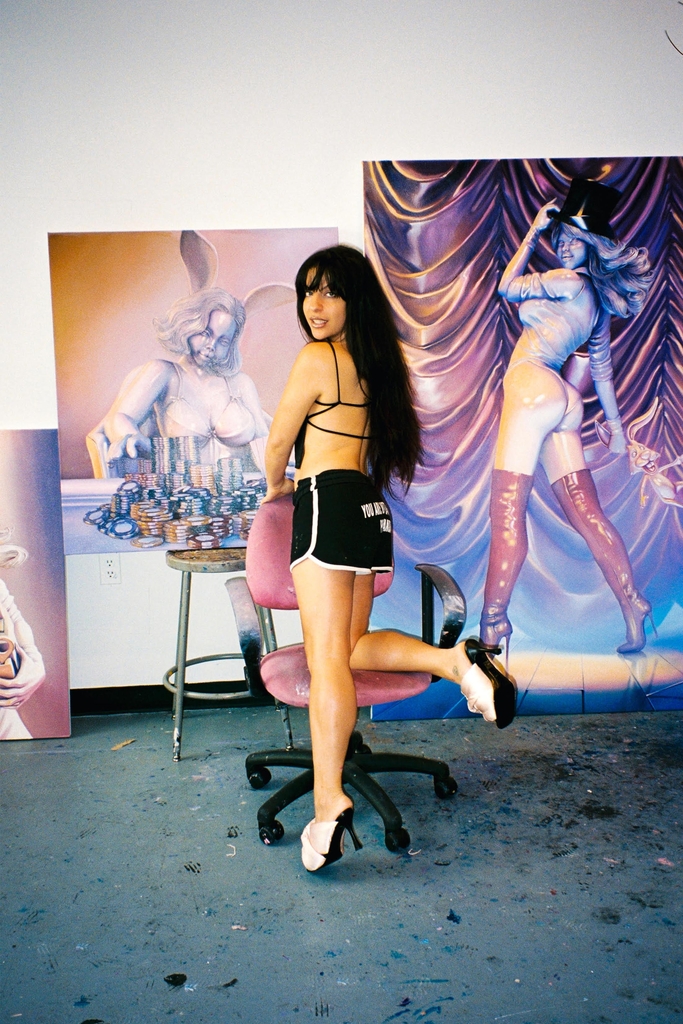
Playboy: Tell us about your art school experiences, both the good and the bad.
Stern: I liked art school, but that’s because I enjoy being a student. I get asked sometimes if I recommend art school, and it’s a hard question to answer. I think it really just depends on your professors. It depends who you are working with, because the problem with art school and the reason I struggle on recommending it in good faith is because the people who wind up teaching there—it’s not like academia. If someone’s an art school professor, it’s because they’re not making a living as an artist.
The most formative creative breakthrough I had while I was in art school, I went to Pratt Institute. My junior and senior year, I got a job working at The Cooper Union (a different art school) as a figure model for the drawing classes. So my job was to pose naked, and just by virtue of being in the room, I got this world class education because The Cooper Union is the best art school for undergrad in the country. So I was certainly learning by osmosis.
I wanted to do that job because I was figuring out what I was interested in conceptually, as an artist, at that point. I knew I was interested in the figure, and I was doing tons of female nudes. My favorite artists were all post-renaissance painters. I was feeling a bit stuck, and wondering what I could possibly add to this conversation as a female artist in the 21st century that hadn’t already been said by a bunch of dead white guys hundreds of years ago.
So I zeroed in and realized I was really interested in the concept of the muse, the dynamic between the artist and the muse. Being a painter and posing for drawing classes, I got to experience both of those things. What happened shortly after is that I decided to build my own muses. In the context of self-portraiture, the figures that I paint are all avatars, and an avatar is always a self-portrait.
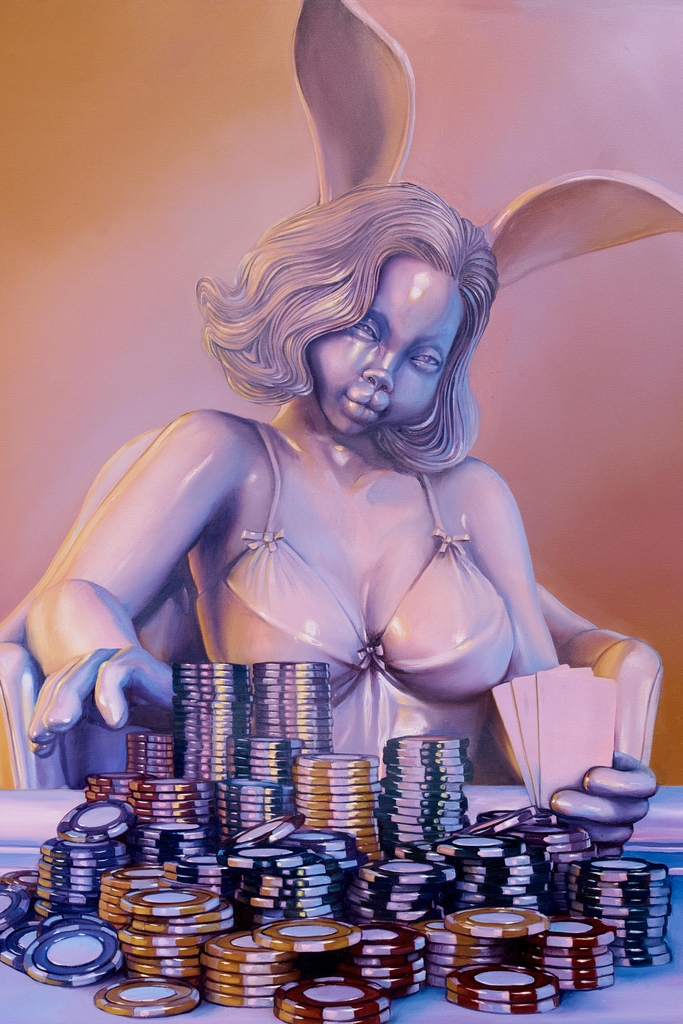
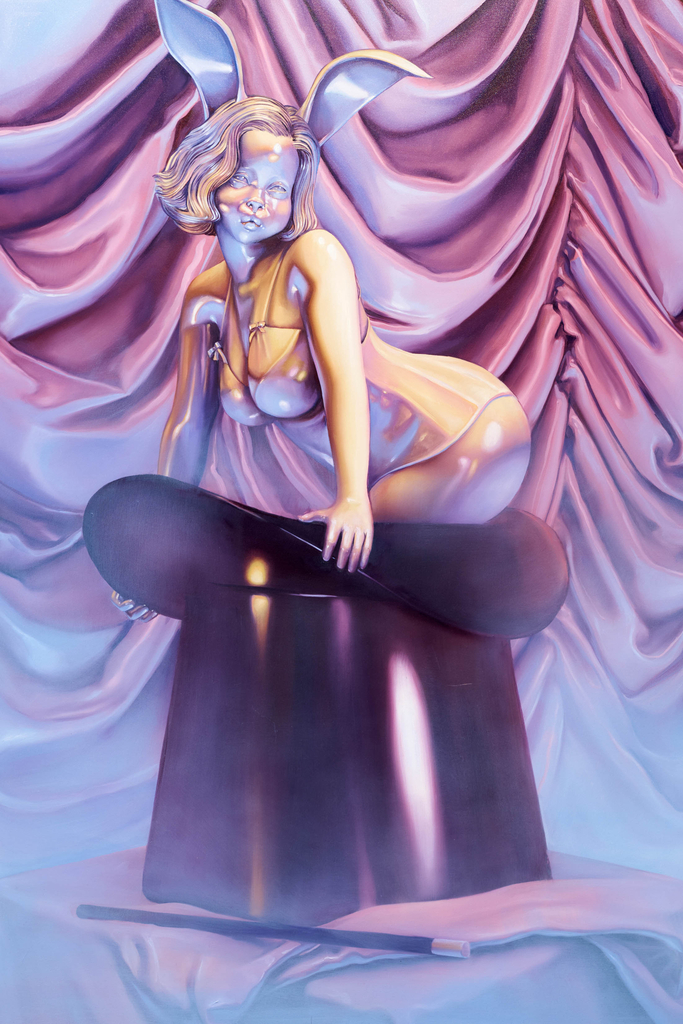
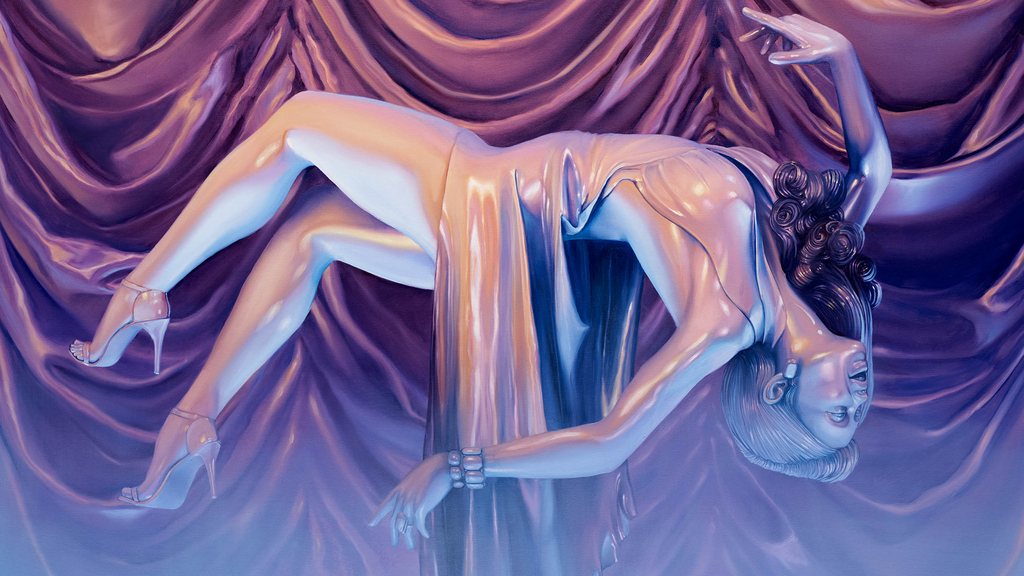
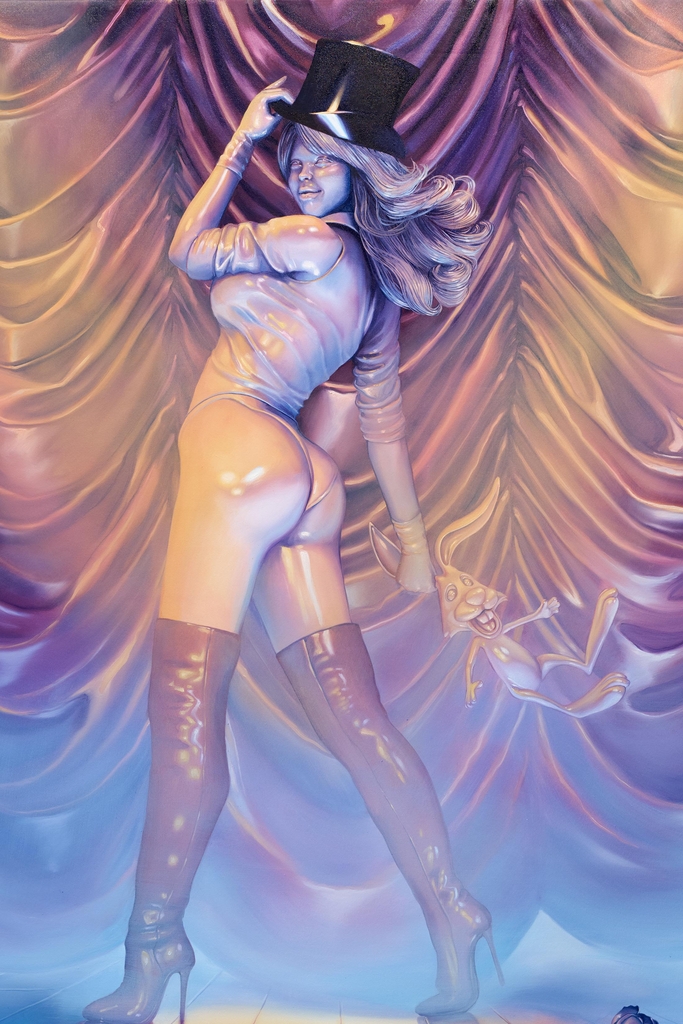
Playboy: What was the first painting you ever created, and how do you feel about it today?
Stern: Well, it was that blacktop painting. I think it’s an amazing conceptual art piece. I wanna figure out a way to do that at some point, with a grant from a museum or something. (laughs)
Playboy: What is your process like, from inspiration to completion?
Stern: I use 3D character design software that is intended for game developers, but gets used a lot by people who make 3D porn. That’s interesting to me, because the visual vocabulary appears in my paintings. I’ve heard them referred to as “porn-adjacent,” which I think is hilarious. There’s a little bit of sexiness and suggestion, but there’s not a lot of nudity, let alone penetration. But it’s because everyone is picking up on these tropes. The things that you make look like the tools you use to build them.
So that’s where I build the muses. And then, the second step is using another 3D software to build out the environments, the lighting, the textures. And that’s where they really start to look like my paintings. That’s where they get that glossy plasticky-ness. I’m just building a virtual diorama, which is pretty much how I learned to paint.
So that’s the first leg of the journey. And then it becomes a painting, and I’ve been painting my whole life, so that’s the easy part. By the time I’m painting, most of the creative decisions have already been made, and it’s quite procedural at that point.
Playboy: Do you feel your work subverts the original purpose of the video game modeling tools and what game makers often choose to make with them?
Stern: Yeah, I like the word subvert more than the word criticize. I always want to correct people when they say that I’m being critical of this visual language, because I’m not. In fact, I have a real affection for it, which is why I’ve spent my life making these images.
As far as subversion goes — I like that, because when something is subversive there’s the shallow read, which is “hot centaur girl in a bikini,” and if that’s all you get out of it. The deeper read on it is, again, the things we make look like the tools we used to build. The space of software and gaming is obviously a very male-dominated arena. The virtual female body, which is my point of interest, that is getting created by men in many situations, and sometimes embodied by men.
I actually have, in my house, an issue of Playboy with Lara Croft on the cover. I talk a lot about her because I love her as an example of a virtual female body, because she’s one of the originals. When they were trying to get the Tomb Raider game made and brought it to studios, the studios were reluctant to make the game because “no one gonna’s want to play as a girl.” But then the game gets made, and it turns out a lot of people want to play as a girl. She’s an avatar.
I talk about how there’s an inherent drag element in being an avatar, making an avatar. This idea you can create a character and embody it, and especially when that character is a virtual female body, that’s the thing I’m most interested in. The point I keep returning to is there’s a very fine line between who you want to embody and who you want to have sex with. I think that Venn diagram is almost overlapping.
Playboy: You’ve created a world around your “Lava Babies”, Penny & the Dimes, that you recently released a book about. What do they symbolize to you?
Stern: For the last show I did was in September in London. That whole show was about the fictional rock band I’d invented. That’s my rock star drag. I’ve always wanted to be a rock star but I have no musical talent and I also have stage fright. So I get to create these avatars and offload my rock star fantasies without having that corporeal stage fright.
I think of it when I do a solo exhibition on a gallery, I think of it like a concept album. I get really obsessed with a set of characters, and I move on from them completely for the next show. But sometimes I will think up a story in my head to generate images, and now I am starting to write them down. Whether anyone reads them is beside the point. It helps me to have some kind or narrative that ties them together. The short stories have become companion pieces.
With the “Penny & the Dimes” the novella, that short story turned into 50 pages. And I decided it was good enough that I wouldn’t be ashamed to have other people read it. I’m definitely not writing another 50 pages another time soon, but I do have a stream of consciousness story about this magic bunny for the new show.
Playboy: Tell us about the opening of your newest show.
Stern: This show that is coming up is called “Welcome to the Rabbit Hole.” The Rabbit Hole is a fictional casino that I invented, because I wanted to do a show about a magician and her assistant, her sexy bunny — which is very fitting for Playboy!
I’ve been having some pretty intense anxiety about AI in art, because it’s all starting to feel a bit like magic. And I think that was the first kernel of me wanting to do a show about magicians. I think it also a way to offset some anxiety I am having. I think of it all as being tricks and illusions.
Playboy: How do you feel about people calling your work “ironically misogynistic?”
Stern: I think I said that about my work! I like the term “ironically misogynistic” because there’s so many layers of irony. It cannibalizes itself. It’s post-post-post modern and ceases to mean anything. I like playing with that level of absurdism.
I’m a big Quentin Tarantino fan. I like his movies and I try to make work like he does. By that I mean there is so much violence it ceases to be violent that it becomes a joke at some point. It stops registering and just goes back to being the color red at some point. I think of the paintings as so horny and overly sexual, that at some point they just become paintings again.
I take issue with the word irony in general, so I like denying it its meaning. The literal definition of irony is “the absence of authenticity.” I like to think that my work is quite authentic. I make these images because I authentically like them, not ironically like them.
Playboy: You’ve moved into sculpture as a medium in recent years. How does telling the story of your subjects feel different in paint versus in sculpted form?
Stern: I am super interested in sculpture, and this is a pivot I have been meaning to make for a while. I love seeing these figures realized in three dimensions because they take up space and you have to move around them. The learning curve has been pretty extreme and I am super lucky to be working with some really amazing fabricators who can handhold me through it.
All of these figures start off in virtual 3D, and there’s a process of me transposing the 3D thing into a 2D painting. When it’s sculpture, it’s much more 1 to 1, because it’s going from virtual to actual 3D. That’s about as magical as it gets in my mind. I think of a thing, and it suddenly exists, and it’s heavy, and it’s hard to move. That’s been such a cool process to learn.
I get approached a lot about doing toys, like once a month someone asks. But really don’t want these to be dolls. I think there is a danger in them becoming quite cute, and I don’t want them to be cute. I want them to be confrontational and impositional.